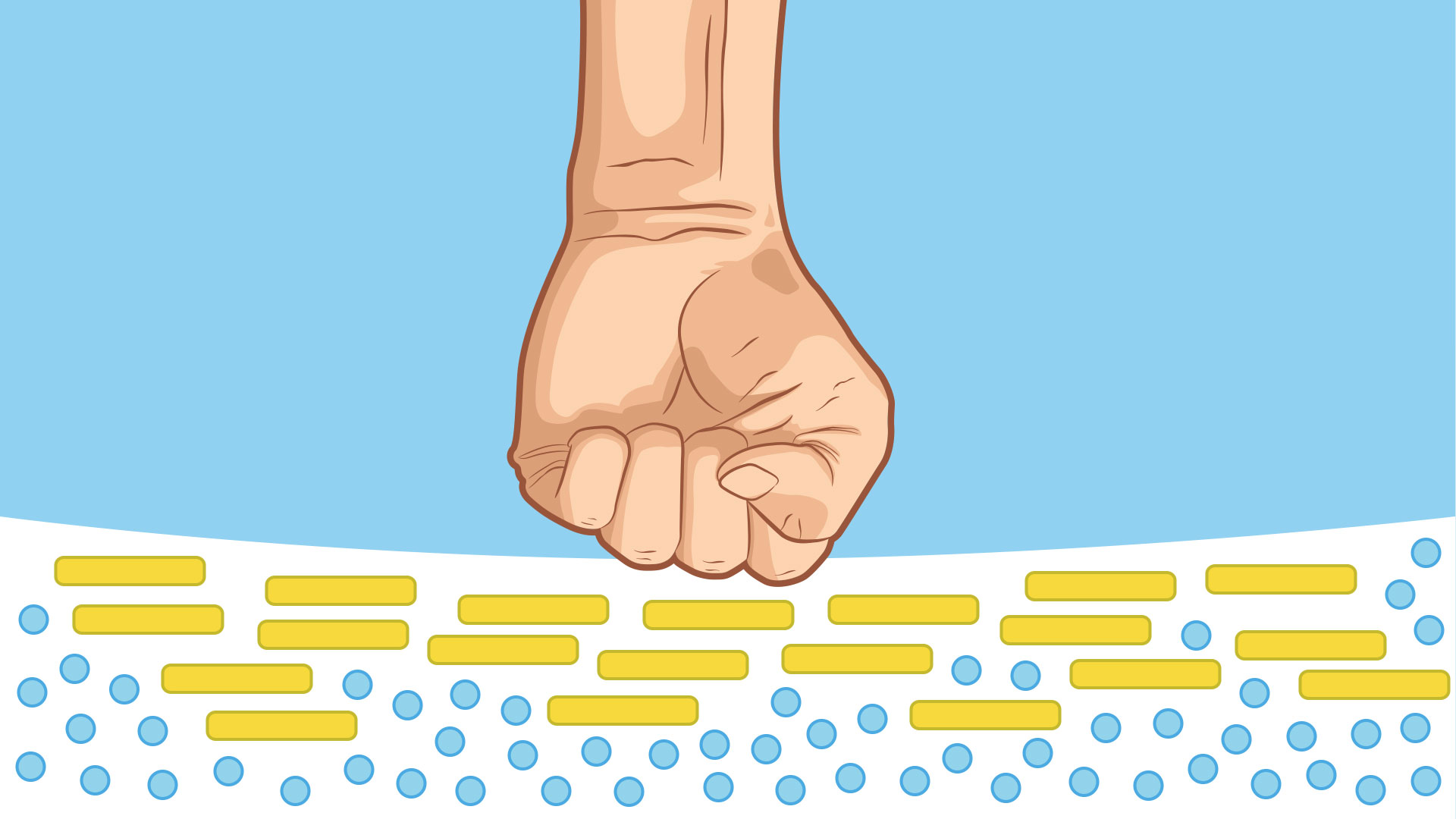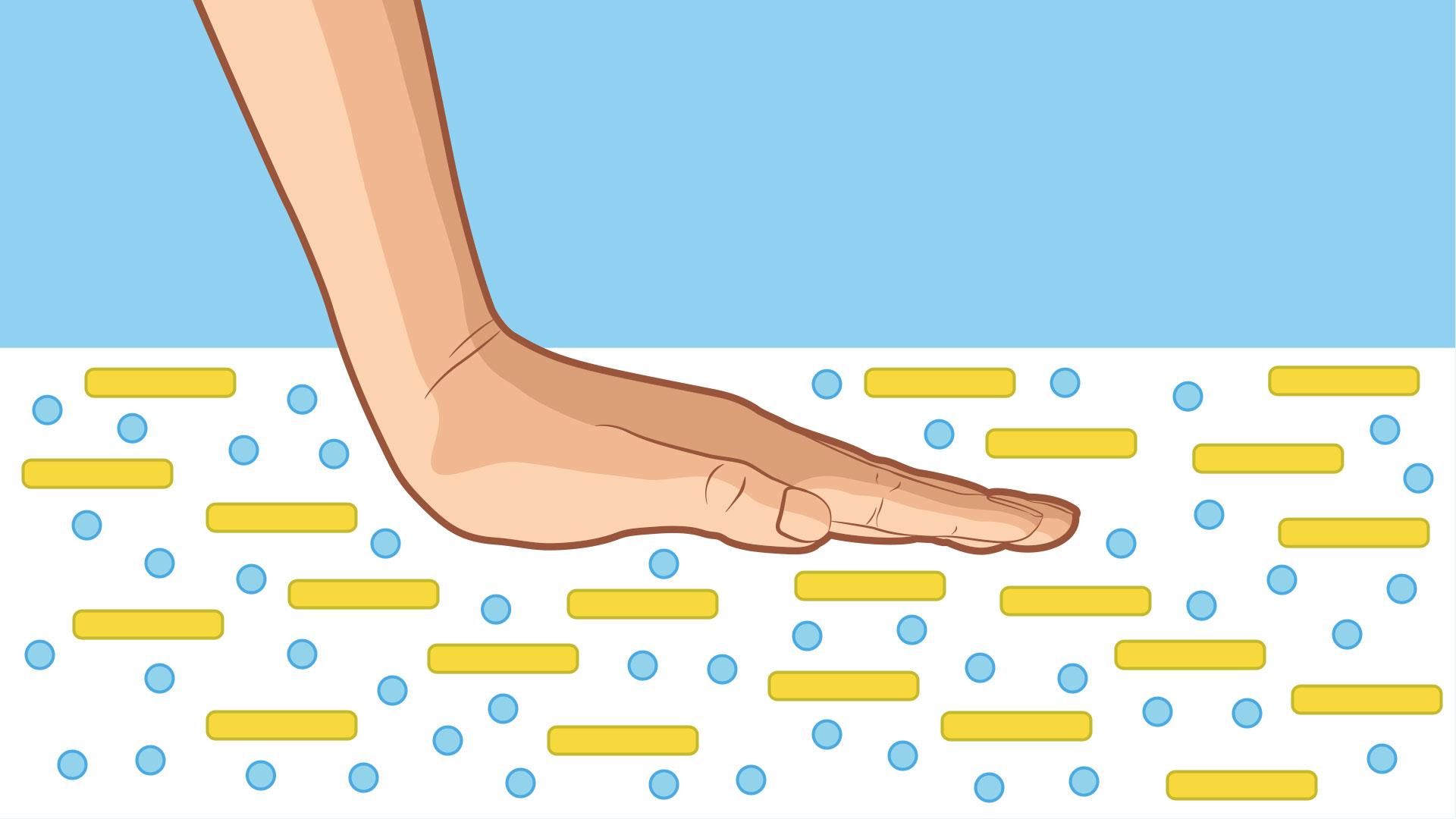Oobleck
- Easy
- Very Messy
- 15 Minutes
- Indoor
When is a liquid not always a liquid and a solid not always a solid?
When it’s "Oobleck"! Explore Non-Newtonian fluids - solutions that change their state of matter under pressure! It’s easy to make and super fun to play with. Try it!
Watch the video on YouTube: https://youtu.be/3TNBncRwgog
You Will Need
1 cup of water
1 to 2 cups of cornstarch
Mixing bowl
Food coloring (optional)
Directions
- Ask student to create a testable question (a hypothesis). Example: Will objects sink or float in the oobleck?
- Put 1 cup of water in a bowl and gradually add the cornstarch to it.
- Mix and blend very well. If it is too liquidy, add more corn starch by spoonfuls. (The consistency should be somewhere between a liquid and a solid--you should be able to grab a clump using pressure to keep it “solid”, but when you open your hand it should “melt” back out like a liquid.)
- If desired, mix in a few of drops of food coloring.
- Play! Experiment to see when it feels most solid (hint: try punching or pounding it) and when it feels most liquid (hint: try slowly sinking an open hand into it).
- Bonus: Use a large plastic bin or tub to make a big batch of Oobleck. Multiply the quantity of each ingredient by 10 or more and mix it up.
- Important Cleanup Information: Pour the oobleck into a zip-top storage bag and throw it away in the garbage. Pouring it down the drain, even with lots of extra water, can clog pipes.
**Note: Oobleck is non-toxic, but use caution when doing any science activity. Be careful not to get it in your eyes, and wash your hands after handling the Oobleck.
Discovery Questions
Beginning the Experiment
- What is the difference between a solid and a liquid?
- Liquids move and flow and take the shape of their container. Solids are rigid and have their own shape.
- Is oobleck a liquid or a solid?
- It’s a Non-Newtonian fluid - a what? Check out the “How it Works” section for more information on what that is!
During the Experiment
- What happens when you squeeze the oobleck in your hand?
- Try it!
- What happens to water if you do the same?
- Try it!
- What causes the oobleck to turn into a solid when pressure is added?
- Applying pressure increases its thickness, or its viscosity. When you squeeze it, the cornstarch particles squish together making it feel solid.
- What happens when objects are dropped or placed in the oobleck?
- Try it!
- Is the evidence and data you are collecting helping you test your hypothesis question?
- Answers will vary based on the scientist.
After the Experiment
- Will the oobleck stay like this forever? What happens if you let it sit overnight? For a week?
- Try it!
- Can you think of any other substances that behave like oobleck?
- Answers will vary, but can include things like: ketchup, toothpaste, shampoo, paint, and quicksand.
- If you were trapped in a pool of oobleck, what is the best way to get out?
- Move very slowly to the edge: the slower you move the less the oobleck will resist your movements.
How it works
It’s all about viscosity, or the liquid’s resistance to flow (internal friction), or its thickness. Most fluids are Newtonian (named after Isaac Newton), and will remain at the same viscosity (or rate of flow, or thickness). For example, water has the same resistance/viscosity when standing in a pool as when swimming. It won’t change its internal friction or become thicker when you try to move through it.
Oobleck, however, is Non-Newtonian and changes its viscosity. If you apply pressure to the mixture, it increases its viscosity. A quick tap on the surface of Oobleck will make it feel hard, because it forces the cornstarch particles together.
If you dip your hand slowly into the mix, your fingers will slide in as easily as through water. Moving slowly gives the cornstarch particles time to move out of the way. 
Key Words
- Liquid
- A substance in the fluid state of matter having no fixed shape but a fixed volume.
- Solid
- The state in which a substance has no tendency to flow under moderate stress; resists forces (such as compression) that tend to deform it; and retains a definite size and shape.
- Viscosity
- A measure of the resistance of a fluid (its thickness).
- Pressure
- The continuous physical force exerted on or against an object by something.
- Particles
- Any one of the very small parts of matter (such as a molecule, atom, or electron).
- Non-Newtonian Fluid
- A Non-Newtonian fluid is one that changes its viscosity under pressure.
